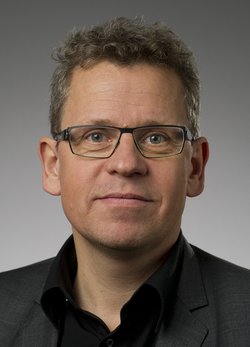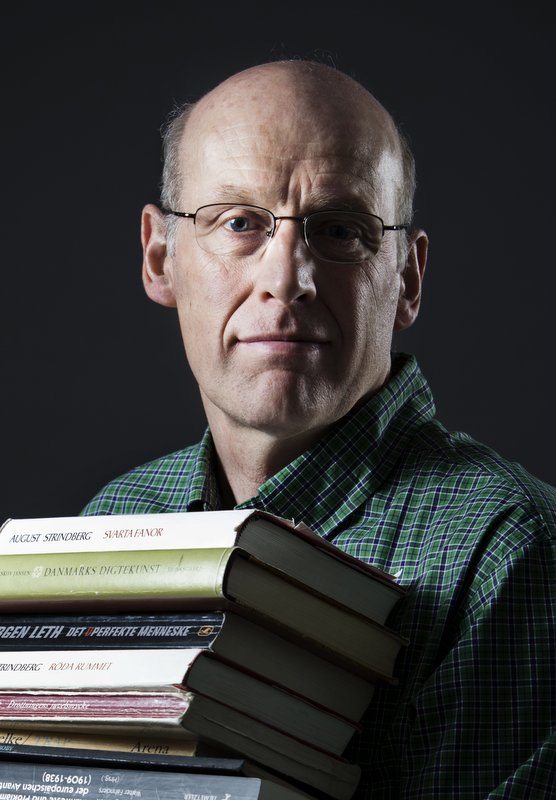Arts: One School is top of the class concerning gender balance – the other two are on the right track
DPU – Danish School of Education is one of the few schools at AU which has an equal distribution of men and women in academic positions from post-doc level upwards. This is despite the fact that about 65% of the PhD students are women. The two other schools at Arts are still male-dominated at the more senior levels, but are working to create more gender balance by employing more women as associate professors and professors.

THEME: Gender (im)balance at AU
Omnibus will focus on gender balance at AU’s departments and schools over the coming weeks.
Over the next four weeks Omnibus will look at statistics from all the schools and departments spread over four articles: one for each faculty. We will focus on Natural Sciences and Technical Sciences collectively, because the numbers are from before the faculty was divided into two separate faculties.
This week we focus on the schools at the Faculty of Arts.
A little bit on our data
Omnibus received data from Analysis and Policy under the remit of the university management. The data show the gender distribution among academic employees at all of AU’s departments and schools.
The numbers are from the end of 2019. They are the same data that are used for the yearly evaluation of AU’s action plan for gender equality. In addition, we supplemented the data with numbers of Master’s graduates during the period 2016-2020.
We have chosen 2-3 departments and schools from each faculty, which are either representative of the faculty or stand out in one way or the other. For each of these departments and schools, we have asked the head of department/school to answer 3-5 questions via email.
If you wanted to pick a school that is top of the class in relation to gender balance at AU, then this would be DPU. At universities nationwide and at the majority of departments and schools at AU, there is a clear dominance of men in associate professor and professor positions. However, DPU has an almost equal distribution of men and women in all positions, from postdoc up to professor.
And this is despite the fact that the school’s programmes are clearly dominated by female students. More than 80% of the students graduating with a Master’s degree in Science Education between 2016 and 2020 were women.
A kind of exception
Not surprisingly, this tendency spills over to the gender distribution amongst the PhD students: in 2019 almost 65% of the PhD students were women. But at all levels above PhD, the distribution is much more even between men and women.

Claus Holm, head of department at DPU - Danish School of Education
”Yes, it’s true that we are a kind of exception from the usual pattern,” wrote head of department Claus Holm in a mail to Omnibus.
He explained that the flattering numbers reflect the current efforts of the department.
“Through the years, mostly women, and I might add who are exceptional in their field, have been employed at DPU. Besides, since 2014/2015 the school has been working for an equal distribution of men and women among the members of staff and we’ve come a long way during this period.”
Still some way to go among PhD students
But there are still areas where management thinks work needs to be done. For example, the department continues to employ mostly female PhD students. This was indicated in a report conducted in relation to ‘AU’s action plan to attract more women to research 2016-2020’.
In 2019, 74% of newly-recruited PhD students were women, even though only 58% of applicants were women. Looking at the gender distribution of the qualified applicants, 62% were women and 38% were men. In other words, the percentage of newly-hired women is higher than the percentage of qualified female candidates.
Omnibus had planned to ask head of department Claus Holm how the department is planning to reduce the gender bias among PhD students, but unfortunately it wasn’t possible to get a response to this before going to press.
SCC: Imbalance is due to historical skew – but we’re making progress
At the School of Communication and Culture (SCC), there’s an overrepresentation of women on the first rung of the academic career ladder, while men are overrepresented from associate professor level upwards.
But we’re working on addressing the gender imbalance at the school, explained head of school Per Stounbjerg.
“There has basically been a really positive development as a result of AU’s action plan to get more women into research 2016-2020. This is most obvious in the category of professors, where in 2016 there was 1 female professor and 10 male.”
By the end of 2019, there were 19 male professors and 12 female, and Per Stounberg highlighted that since then four new professors have been employed, three of whom are women.
There’s also positive movement in other employment categories. For example, our professor initiative moved a number of women from associate professor to professor positions. That said, there’s still work to be done to achieve a complete balance in the associate professor and professor categories, where the current distribution is around 40/60,” said Per Stounbjerg.

Per Stounbjerg, head of department at the School of Communication and Culture (SCC)
You have more women than men in PhD, postdoc and assistant professor positions, but fewer women at associate professor and professor levels. What do you think is causing this imbalance?
“Gender imbalance at the higher levels is a problem. It’s mostly due to a historical skew in figures, and changing this will require active recruitment efforts, as well as resignations. It will be a tough and drawn-out recruitment process. Yet, we are aware of the problem and we’re making progress,” said the head of school.
Increase in the use of search committees – and re-advertising positions
Per Stounbjerg explained that it is a strategic aim of the school to employ more women at associate professor and professor levels.
”There are many and well-known reasons for this: gender equality, diversity, making best use of people’s talents and role models for all groups of students.”
He explained further:
”This effort includes making job advertisements more visible, actively using search committees more, and in more than a handful of cases re-advertising positions due to a lack of diversity (in the pool of applicants, edited.).”
In addition, Per Stounbjerg highlighted that the School of Culture and Society always has a mix of genders on the recruitment and assessment committees. Also, we have found that shortlisting candidates makes it easier for the assessment committee to be more aware of gender in the field of applicants.
Men are not being discriminated against
You have higher numbers of female PhD students, postdocs and assistant professors – why is that? And is that a problem for male applicants at these academic levels?
”Having more women among non-permanent positions relates partly to our student composition. It’s an explanation but in no way an ideal.”
The head of school considers the strategic intervention to improve gender balance as a necessary condition to compensate for the skew in gender figures that have been visible over a number of decades.
“Non-permanent male members of staff have been expressing some concerns. But in reality, I don’t see any signs of these men being discriminated against,” said Per Stounbjerg.
SCS: More men on the upper rungs of the career ladder
At the third school in Arts, School of Culture and Society (SCS), there is a higher number of women among those graduating with a Master’s degree, like at the School of Communication and Culture. And they also have a higher female percentage among their PhD students.
But at associate professor and professor levels, it’s the men who dominate. Women make up 59% of the PhD fellows employed at the school, while this percentage drops to 33% at professor level.
Omnibus wanted to hear head of school Bjarke Paarup’s comment on these numbers, but he hasn’t yet replied to the request by Omnibus.
Translated by Marian Flanagan
THEME: Gender (im)balance at AU
Omnibus will focus on gender balance at AU’s departments and schools over the coming weeks.
Over the next four weeks Omnibus will look at statistics from all the schools and departments spread over four articles: one for each faculty. We will focus on Natural Sciences and Technical Sciences collectively, because the numbers are from before the faculty was divided into two separate faculties.
This week we focus on the schools at the Faculty of Arts.
A little bit on our data
Omnibus received data from Analysis and Policy under the remit of the university management. The data show the gender distribution among academic employees at all of AU’s departments and schools.
The numbers are from the end of 2019. They are the same data that are used for the yearly evaluation of AU’s action plan for gender equality. In addition, we supplemented the data with numbers of Master’s graduates during the period 2016-2020.
We have chosen 2-3 departments and schools from each faculty, which are either representative of the faculty or stand out in one way or the other. For each of these departments and schools, we have asked the head of department/school to answer 3-5 questions via email.

